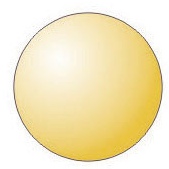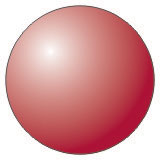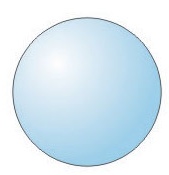| Age-Related
Macular Degeneration |
| BPI Diamond Dye 500/550 |

|
| BPI Blue Filter Vision 450 |

|
| BPI Total Day |

|
| BPI Melanin |

|
| BPI Monochrome 600 |

|
|
- National Center for Biotechnology Information, U.S. National
Library of Medicine
- Age
related macular degeneration and visual disability
- Therapy
for Macular Degeneration
- How
much blue light should an IOL transmit?
- Optometry and Vision Science, American Academy of Optometry
- Light
Filtering in a Retinal Pigment Epithelial Cell Culture Model
- PLOS One
- Comparison
of Blue Light-Filtering IOLs and UV LightFiltering
IOLs for Cataract Surgery: A Meta-Analysis
- PHOTOBIOLOGICAL SCIENCES ONLINE, American Society for
Photobiology
- "PHOTOBIOLOGY of the HUMAN LENS," by Joan E.
Roberts, Fordham University
- Healio.com - Primary Care Optometry News
- Need
increases to educate patients, offer protection against blue
light
- Progress in Retinal and Eye Research 31 (2012) 28-42
- The susceptibility of the retina to
photochemical damage from visible light, Hunter et.al.
- NCBI-National Center for Biotechnology Information, National
Institute of Health. Abstract from British Journal of
Ophthalmology
- "Blocking the
blue," P Hawse
- Northern Light Technologies
- "Artificial Lighting and the Blue Light
Hazard, by Dan Roberts (PDF)"
- "The Journals of Gerontology, Series a", The Gerontological
society of America
- "Optically Improved Mitochondrial Function
Redeems Aged Human Visual Decline"
Exposure to deep red/near infrared light appears to improve
retinal sensitivity in aging eyes. Also see the following
article:
- NCBI-National Center for Biotechnology Information, National
Institute of Health. Abstract from Neurobiology of Aging.
- Aging retinal function is improved by near
infrared light (670 nm) that is associated with corrected
mitochondrial decline
|
| AION (Anterior Ischemic Optic Neuropathy) |
| BPI Gray
(Tinted to light density) |

|
| BPI Green (Tinted to light density) |

|
| BPI Amber Tinted to light density) |

|
|
- Envision University website Public Forums
(https://university.envisionus.com/)
- Four AION
Low Vision Cases (PDF)
|
Albinism Photophobia;
Light sensitivity |
| BPI Gray |

|
|
- US National Library of Medicine
- Albinism
|
Autism
|
| BPI IR
Blue |

|
| BPI Omega |

|
| BPI Sahara |

|
| BPI Mu |

|
| BPI Blue Filter Vision 450 |

|
| BPI UV Diamond Dye 400 |

|
| BPI Signal Blue |

|
| BPI Signal Green |

|
|
- Donna Williams autism information
- Opticians
who use tinted lenses for people with autism
|
Blepharospasms
(blinking spasms in bright light)
|
| BPI FL-41
tint; |

|
| BPI Gray tint |

|
|
- NIH - National Library of Medicine - National Center for
Biotechnology Informations
- FL-41 tint
improves blink frequency, light sensitivity, and functional
limitations in patients with benign essential blepharospasm
- Blepharospasm.org
-
Electromyographic Evidence that FL-41 Tinted Spectacles
Decrease Blink Frequency and Force in Benign Essential
Blepharospasm (PDF)
- American Academy of Ophthalmology, Eyenet Magazine
- Photophobia:
Looking for Causes and Solutions
|
Brain Trauma
|
| BPI Omega |

|
| BPI FL-41 |

|
| BPI Diamond Dye 500/550 |
 |
|
- State University of New York, State College of Optometry
(PDF)
- Conceptual
Model of Optometric Vision Care in Mild Traumatic Brain
Injury
- Wikipedia (Illusory palinopsia)
- Illusory
Palinopsia
- Semantic Scholar
- TINTED
LENSES IN THE TREATMENT OF VISUAL STRESS IN A PATIENT WITH A
TRAUMATIC BRAIN INJURY A CASE REPORT
- NIH - National Library of Medicine - National Center for
Biotechnology Information
-
Visual snow syndrome: evolving neuro-optometric
considerations in concussion/mild traumatic brain injury
|
| Cataract |
| BPI Blue Filter Vision 450 |
 |
|
- National Center for Biotechnology Information
- Ultraviolet
radiation as a risk factor for cataract and macular
degeneration
- "Photobiological Sciences Online," American society for
Photobiology
- Photobiology
of the Human Lens
|
Color Blindness
and Achromatopsia
|
| BPI Deep Red Monochrome 600 |

|
| BPI FL-41 |
 |
| BPI AO Plum |

|
| BPI Gray |
 |
|
Wikipedia
(Color Blindness)
Color
Blindness
Optometric Management
Colors
are Therapeutic Use therapeutic specialty-tinted contact
lenses to improve lives and grow your practice
Achromatopsia.info
Eyewear:Controlling
glare inside and outside!
20/20 Magazine
Achromatopsia, by Lori Passarelli ABO-AC FNAO
An on-line course on the genetic condition characterized by
color blindness, low vision, extreme light sensitivity (day
blindness) and nystagmus.
Individuals with this complaint might benefit from an aid to
choosing the most effective color for eyewear
Filter color Selector
Program
|
| Computer-related Eyestrain |
| BPI EVA #1 |

|
| BPI EVA #2 |

|
| BPI EVA #3 |

|
| BPI EVA #4 |

|
|
Brain Power Inc.
BPI Therapeutic Tints (PDF)
Individuals with this complaint might benefit from an aid to
choosing the most effective color for eyewear
Filter Color Selector
Program
|
| Contrast Sensitivity |
| BPI Blue Filter Vision 450 |

|
| BPI Diamond Dye 500/550 |

|
|
- National Center for Biotechnology Information
- Effect of
a yellow filter on contrast sensitivity and disability glare
after laser in situ keratomileusis under mesopic and
photopic conditions
- NIH, National Library of Medicine
- The
Visual Effects of Intraocular Colored Filters
- PLOS One
- Comparison
of Blue Light-Filtering IOLs and UV LightFiltering
IOLs for Cataract Surgery: A Meta-Analysis
- Chaotic Glass, by Mike Aurelius
- Visible
Light Hazards and the Glassworker
- Individuals with this complaint might benefit from an aid to
choosing the most effective color for eyewear
- Filter color Selector
Program
|
| Dyslexia |
| BPI IR
Blue |

|
| BPI Omega |

|
| BPI Mu |

|
| BPI Diamond Dye 500/550 |

|
|
- NIH, National Library of Medicine
- Visual
Oculomotor rehabilitation in children with dyslexia
- National Center for Biotechnology Information
- Transient
and sustained processing: effects of varying luminance and
wavelength on reading comprehension.
- Effective
interventions for reading disability.
- Journal of Behavioral Optometry
- Transient
and Sustained Processing: A Dual Subsystem Theory of Reading
Disability
- Brain Power Inc.
- BPI
Dyslexia Research Lorgnette Set
- Individuals with this complaint might benefit from an aid to
choosing the most effective color for eyewear
- Filter color Selector
Program
|
| Fibromyalgia |
| BPI Signal
Green |
 |
|
- THE AMERICAN SOCIETY OF ANESTHESIOLOGISTS
-
Green eyeglasses reduce pain-related anxiety in fibromyalgia
patients, study shows
- The Science Times
-
Eyeglasses With Specified Green Light Spectrum Filter
Relieves Pain-Related Strains [Study]
|
| Glaucoma |
| BPI Blue
Filter Vision 450 |
 |
| BPI Total Day |
 |
| BPI Melanin |
 |
| BPI Filter Vision 480 |
 |
|
- Glaucoma Research Foundation
- Glaucoma
and Driving
|
| Insomnia |
| BPI Blue
Filter Vision 450 |
 |
| BPI Total Day |
 |
|
- Columbia University, Irving Medical Center
- Amber-tinted
Glasses May Provide Relief for Insomnia
|
| Light-induced
Migraine |
| BPI FL-41 |

|
| BPI Diamond Dye 500/550 |
 |
| BPI Signal Green |

|
|
- Everyday Health
- A
Rosier View for People with Migraines
- National Center for Biotechnology Information
- The use of
tinted glasses in childhood migraine.
- BRAIN (A Journal of Neurology) Oxford University Press
- Migraine photophobia originating in
cone-driven retinal pathways
|
| Low Vision |
| BPI Filter Vision 480 |

|
| BPI Diamond Dye 500/550 |
 |
|
- Academia.edu (PDF) (Requires profile information from Google
account)
- Do
tinted lenses or filters improve visual performance in low
vision? A review of the literature
- Air Force Research Laboratory, Human Effectiveness
Directorate
- Effects
of Colored Filters on Visual Function
- Chaotic Glass, by Mike Aurelius
- Visible
Light Hazards and the Glassworker
- Individuals with this complaint might benefit from an aid to
choosing the most effective color for eyewear
- Filter color Selector
Program
See also the articles listed under "Age-related macular
degeneration" concerning the benefit of exposure to deep red/near
infrared light. |
| Multiple Sclerosis |
| BPI Blue
Filter Vision 450 |
 |
|
- Multiple Sclerosis Association of America
- Visual
Disorders
- slideplayer.com
- Deficient
Low-Contrast Visual Sensitivity Occurs in Patients with
Multiple Sclerosis: May Degrade Gait Performance, Possible
Modification Utilizing High Contrast Visual Aids.
|
Parkinson's Disease/
Dyskinesia (trembling) |
| BPI IR
Blue |

|
| BPI Deep Blue Zee |

|
| BPI Gray |

|
|
- Wikiversity
- The
Blue Light Mystery
- National Center for Biotechnology Information
- Delaying
Mobility Disability in People With Parkinson Disease Using a
Sensorimotor Agility Exercise Program
- Disturbance
of colour perception in Parkinson's disease
- Visual
Symptoms in Parkinson's Disease
- Sage Journals: Clinical Rehabilitation
- A preliminary
investigation of a novel design of visual cue glasses that
aid gait in Parkinson's disease
|
| Photophobia
(light sensitivity) |
| BPI FL-41 |

|
|
- American Academy of Ophthalmology, Eyenet Magazine
- Photophobia:
Looking for Causes and Solutions
- US Department of Veterans Affairs, Health Services Research
and Development
- Photosensitivity
after Traumatic Brain Injury (TBI): Mechanism, Diagnosis and
Treatment
|
| Photosensitive
Epilepsy |
| BPI Deep
Blue Zee |

|
|
- National Center for Biotechnology Information
- Suppressive
efficacy by a commercially available blue lens on PPR in 610
photosensitive epilepsy patients
- Usefulness
of blue sunglasses in photosensitive epilepsy.
- A novel
nonpharmacologic treatment for photosensitive epilepsy: a
report of three patients tested with blue cross-polarized
glasses.
- Epilepsia, Official Journal of the International League
Against Epilepsy
- Suppressive
Efficacy by a Commercially Available Blue Lens on PPR in 610
Photosensitive Epilepsy Patients
- Videogame seizures blog
- Seizure
protection in a bottle!
|
| Retinitis Pigmentosa |
BPI Diamond Dye 500/550
(Tint to cut-off of 527 nm) |
 |
|
- Journal of Optometry, Spanish General Council of Optometry
- Contrast
sensitivity evaluation with filter contact lenses in
patients with retinitis pigmentosa: a pilot study
|
| Strabismic Amblyopia (Lazy eye due to crossed eyes) |
| BPI IR
Blue |

|
| BPI Deep Blue Zee |

|
|
- National Center for Biotechnology Information
- Blue
filter amblyopia treatment protocol for strabismic
amblyopia: a prospective comparative study of 50 cases.
|























